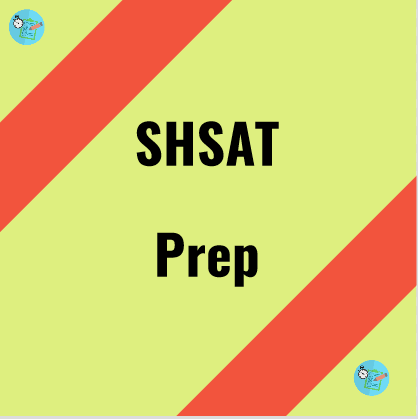The SHSAT (Specialized High Schools Admissions Test) is an exam administered by the New York City Department of Education (NYCDOE) to determine admission to specialized high schools in New York City. The specialized high schools include renowned institutions such as Stuyvesant High School, Bronx High School of Science, Brooklyn Technical High School, and a few others.
The SHSAT exam is typically taken by eighth and ninth-grade students who are seeking admission to one of these specialized high schools for their high school education. The exam assesses students’ skills in English Language Arts (ELA) and Mathematics. It consists of two main sections:
- Verbal section: This section evaluates students’ verbal reasoning, reading comprehension, and logical thinking skills. It includes questions on reading passages, revising/editing sentences, and logical reasoning.
- Math section: This section assesses students’ mathematical knowledge and problem-solving abilities. It covers topics such as algebra, geometry, arithmetic, and quantitative reasoning.
The SHSAT is a multiple-choice exam, and students are allocated a specific amount of time to complete each section. The exam is known for its challenging nature and is designed to identify students with exceptional academic abilities.
The scores achieved on the SHSAT play a crucial role in the admissions process for specialized high schools. Each school has its own specific admission criteria, which may include a combination of the SHSAT score and other factors such as grade point average (GPA) or teacher recommendations.
SHSAT CONTENT AND LENGTH:
The SHSAT is a timed, pencil-and-paper test and has two 57-question sections: English Language Arts (ELA) and Math. Students have 3 hours to complete the test and may use their judgment in determining how much time to spend on each section. There are 4 multiple choices per question. One raw point is given for each correct answer. No points are taken off for wrong answers.
WHAT DOES THE SHSAT COVER?
There are two main sections on the SHSAT. They are used to assess test-takers’ English language arts and Mathematical skills.
English Language Arts: This part of the test contains 57 multiple-choice questions. Ten questions are not scored.
| Question Type | Number of Questions | Description |
| Revising/Editing | 20 | To improve the quality of your writing, you must be able to recognize and correct language errors |
| Reading comprehension | 37 | You will be tested on your ability to comprehend, analyze, and interpret the information you have read. |
| Experimental | 10 | There are no points awarded for these questions, and they are only used for research purposes. |
Mathematics: This portion of the SHSAT also has 57 questions, and only 47 questions are scored. Five are computational questions, referred to as ”grid-in” questions. All of the other questions in this section are multiple-choice questions offering four answer options that test-takers must choose from.
| Question Type | Number of Questions | Description |
| Grid-In | 5 | These questions require the student to “grid in” their numerical answer choice in a chart of numbers. |
| Multiple Choice | 52 | These questions test what the student has learned in math class through the 8th or 9th grade. Each question has 4 choices. |
| Experimental Questions | 10 | These questions are interspersed throughout the test and do not count toward the student’s final score. |
HOW ARE SHSAT EXAMS SCORED?
A total of 94 raw points can be earns from the two sections of the SHSAT exam. For every correct answer, a student receives a point. This is called the raw score. Raw scores are used to determine the scaled score a student earns for each section of the test. The conversion process adjusts for the differing levels of difficulty that may occur between test versions. Once the scaled scores are determined, they are added together to produce the student’s composite score, which is typically no higher than 700.
HERE ARE SOME TIPS FOR PREPARING FOR THE SHSAT:
- Start preparing early. The SHSAT is a challenging test, so it is important to start preparing early.
- Take practice tests. Practice tests are a great way to get familiar with the format of the SHSAT and to identify your strengths and weaknesses.
- Review the SHSAT study guide. The SHSAT study guide provides comprehensive information on the content of the test.
- Work with a tutor. A tutor can help you develop a study plan and provide you with individualized instruction.
- The adage holds true for the SHSAT. We’ll share the importance of mock tests and sample questions, along with recommended practice resources.
- Tackling time constraints is crucial in the SHSAT. Discover effective time management strategies to maximize your score.
- Use online resources. There are a number of online resources that can help you prepare for the SHSAT.
The SHSAT is a challenging test, but it is possible to succeed if you are prepared. As you embark on your SHSAT journey, remember that success is not solely measured by the outcome of an exam. By following the tips above, you can increase your chances of getting into one of New York City’s specialized high schools. So, embrace this unique experience with enthusiasm and determination. May your passion for knowledge guide you to extraordinary heights, regardless of the outcome?
If you are focused, disciplined, and practice good time management you can definitely self-study for SHSAT exam and achieve your targeted score. You can grade your SHSAT practice test through the Socrato online platform to get the insights of the test preparation detailed diagnostic.
Good Luck for the Examination!!










